You are using an out of date browser. It may not display this or other websites correctly.
You should upgrade or use an alternative browser.
You should upgrade or use an alternative browser.
Matrix Audio Element S
- Added by project86
- Create date
project86
Headphoneus Supremus
Pros: Superb sound, plentiful connectivity, crisp display, competent app, value compared to others in this category
Cons: Issues with Roon certification being significantly delayed after launch, OS limited to transport controls rather than full library browsing, doesn't do well directly managing huge libraries

Matrix Audio has released a good number of products over the years, and nearly every one I've tried has been quite competitive in its price range. But the one thing they had yet to offer - despite me telling them they should, over and over again - was a dedicated transport. They did end up adding streaming audio playback functionality to all their DACs, some of which also had pre-amp capabilities and/or headphone outputs, but still never gave us a device to handle that function on its own.
Finally, the team at Matrix offers just that, in the new Element S music streamer.

The Matrix Element S ($1,499) is a dedicated transport with Ethernet and built-in WiFi capabilities. It does Roon, Tidal Connect, Spotify Connect, DLNA/UPnP, and a bunch of other options for playback. The front panel display is a touch screen and shows album art, sample rate, and track information. Basically if you've ever seen or used one of the more recent Element products such as the Element X2, this device is very similar - just focused on providing clean digital outputs rather than integrated D/A conversion.
The Element S also has a lot in common with the recent Matrix X-SPDIF 3 which is known as one of the best digital-to-digital (aka USB to SPDIF) converters around. Basically take the internal circuitry of the X-SPDIF 3, put it in the enclosure from the Element series with the usual streaming/touchscreen/etc, then add a high quality internal PSU specifically made for this application, and you've got yourself the Element S. Critical components of the design include the pair of ultra low phase noise Accusilicone "femto" clocks along with proprietary FPGA data marshalling for the lowest possible jitter and noise. That should give us extremely clean digital outputs in USB, AES, optical, coaxial, or electrically isolated I2S (via HDMI) which is configurable in software to work with various DACs. The Element S is capable of playing up to DSD512 or 768kHz PCM sample rates, obviously depending on the capabilities of the DAC it pairs with.
You can also feed the Element S via USB input, which initially seems weird because why not just get an X-SPDIF 3 if we aren't using the integrated transport features? But Matrix points out that the Element S works well using a USB output from phones and tablets, which I admit could come in handy from time to time. Still, my primary use case would mostly be direct streaming, using Roon for the files stored on my NAS as well as Tidal and Qobuz. I have also had good results using the Matrix MA Remote app, so Roon isn't the only game in town (though it is my preferred player of choice).
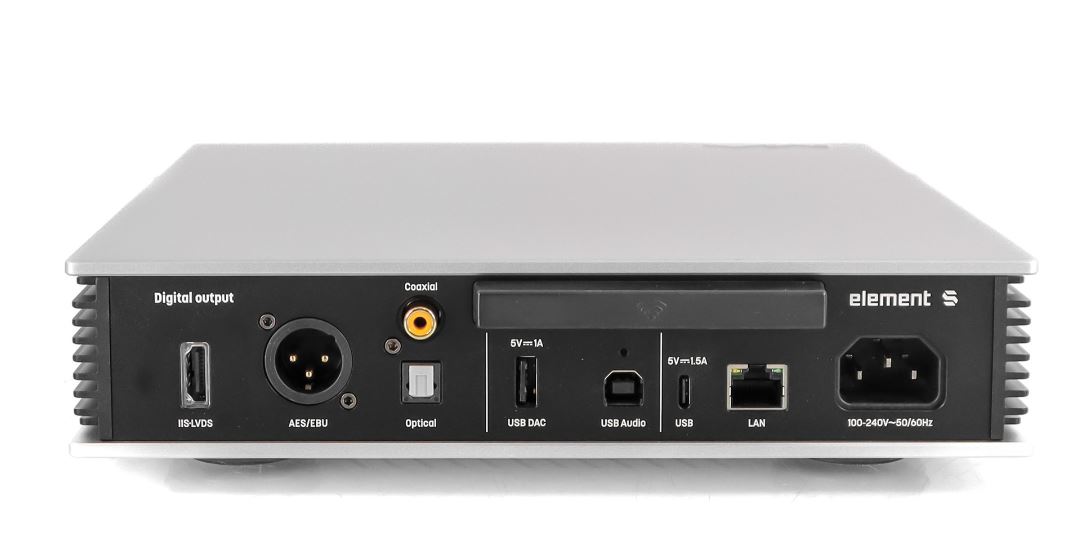
This write-up is nearly a year in the making, not because I'm that far behind on my reviews (not quite at least...) but due to some circumstances beyond my control. You see, Matrix launched the Element S in early 2023. I got my review unit in May and got to listening. Results were extremely promising from a sonic perspective but there were some bugs and issues to work out, including the pending Roon certification. Long story short, it took many months for those tasks to be completed, and since I'm primarily a Roon user I decided to move on to other projects until that was ready. I know some folks who skipped the Element S altogether, and some who actually bought it and sold it due to the Roon issue along with other bugs. So overall I would call this a pretty rocky product launch for Matrix.
That said, the Element S is now fully functional, Roon ready, and runs about as flawless/bug free as any other streaming device I've used. Which means it's finally ready for a full review.

In the interest of getting this published in a more timely fashion, I'm going to get right to the point. The Matrix Element S is a superb transport. When it comes to audio quality, I would put it up against any of the entry level or midrange units that I've heard from brands like Aurender, Innuos, Lumin, Auralic, etc. True, many of those offer more features, larger displays, integrated storage, and in some cases more brand recognition. But in my experience you have to move very far upfield in terms of pricing to get a notable improvement over the Element S. The trend in this segment seems to lean towards multi-function devices (think onboard DAC, headphone amplifier, preamplifier functionality, etc) far more frequently than dedicated transports. So although there are quite a few models out there from those various brands, there actually aren't many options with a similar focus as the Element S. Or at least not in the same price range.
Now that Roon is working and the vast majority of the other bugs have been squashed, I have to say the user experience is satisfying these days. Wifi connectivity is fast and stable with no discernable SQ difference between that and Ethernet. Obviously your network chain plays a huge part here so I can't guarantee anything, but that's been my experience. The touch screen - though a tad on the small side compared to what I'm used to seeing on my Eversolo DMP-A6 - looks very sharp, and feels responsive while in use. I initially thought I would miss having at least a few hardware buttons or knobs but in this case it actually works quite well without them. Even the power/standby function is handled by what I'd call a "virtual button" on the left side of the panel area, which sits near the barely noticeable IR sensor. Overall it's a very sleek, modern design that looks great in an audio rack.

The Element S can play music directly from a USB C source, such as an external SSD or thumb drive. It can also pull music from a NAS or other device via UPnP. Those, combined with Tidal Connect, Spotify Connect, Airplay 2, etc accessed via the MA Remote app mean that the Element S can be your one stop shop for music playback. As is almost universally the case with devices like this, I find that it does a pretty good job with smaller libraries but is not really intended as a server managing a massive collection. The processing power is just not up to the task. So plugging in a 256GB thumb drive full of music is totally acceptable but adding a 4TB SSD will not give the greatest experience. For libraries of that size nothing can touch Roon's smooth interface, but of course that requires additional hardware so it's not a fair comparison. I suspect most folks will primarily use streaming services rather than locally file storage and I have no complaints about how the Element S handles that aspect.
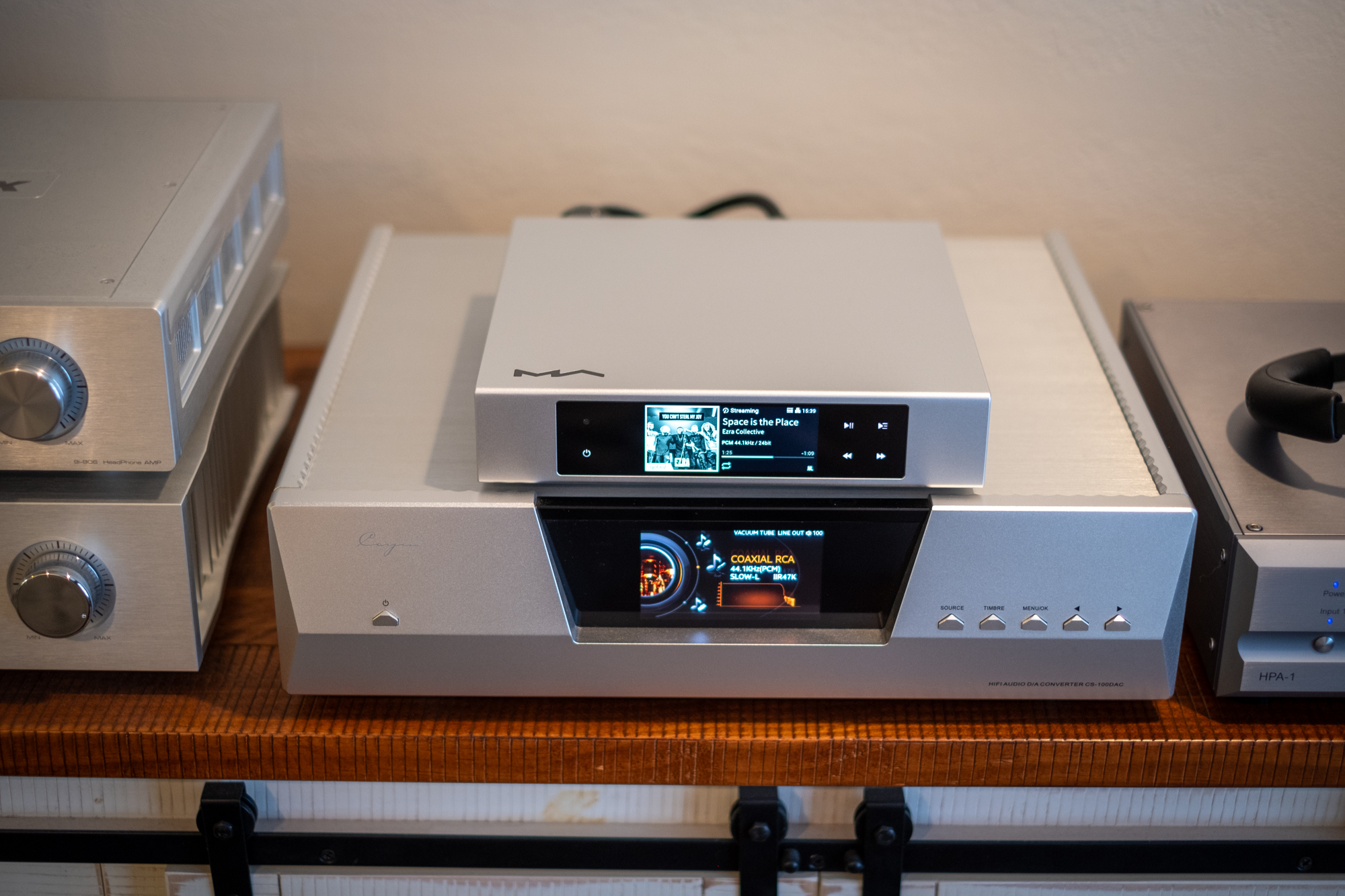
One thing worth noting is that the UI really isn't the same full Android experience as seen on devices like the Eversolo or the Fiio desktop players. For example, those let us choose Tidal, Qobuz, or whichever service we favor, browse through various artists, pick our favorite, and then select an album for playback - all from the front panel display. The Element S isn't quite a stand alone unit in that same way. We still need our smartphone or tablet to run the MA Remote or Roon apps in order to access that full browsing sequence. It's only once the music is playing that we can then use transport controls on the Element S itself.
Some users may find this limiting and I can totally understand that. But for me, even while using the Eversolo DMP-A6, I typically end up relying on my phone via the screen mirroring option. It's just more comfortable to operate that way. And since I actually use Roon most of the time, it ends up being of lesser significance since Roon works via this same principle. Bottom line: I think it's really important for potential users to examine their needs and understand what the various devices on the market can actually do (with or without a supporting PC/tablet/phone/etc), in order to make the most informed choice.
Sound
When it comes to listening, I have used the Element S with a wide variety of gear and always achieved excellent results. I started with comparisons to a Microsoft Surface Laptop running Roon, acting as a sort of baseline general purpose computing device to represent the kind of thing many people use when they first get into streaming. The most noteworthy improvements came from DACs which tend to be highly sensitive to transport quality. In my current collection, that would be the Wyred4Sound 10th Anniversary DAC (with the jitter reduction option disabled), the Cayin CS100-DAC, and an old Sonic Frontiers SFD-1 mkII that I've been borrowing from a friend. In those cases, using amps such as the Cen.Grand Silver Fox, Cayin HA-6A, or Niimbus US4+, I perceived what I would call fairly significant gains in multiple areas. With careful listening of high quality recordings, I heard improved soundstage size and accuracy, deeper bass extension, more engaging midrange with less treble glare, a lack of grain in the upper midrange, and more focused transients. Using great headphones like the Audeze LCD-5, Meze Elite, ZMF Caldera, or 64 Audio A18t CIEMs, these changes were not difficult to spot. Obviously switching to less resolving headphones or playing something other than reference caliber recordings will reduce this impact by some degree, but I would say it's still an appreciable upgrade in most cases.

Less substantial but still very much worthwhile improvements came when using gear which is somewhat less picky about transport quality. For me that would be the Musician Audio Aquarius R2R DAC or the Violectric V590 integrated DAC/headphone amplifier. Those did not transform quite so drastically yet still represented what I would call noticeable gains, on the level of upgrading amplification or perhaps adding a good power conditioner to the system.
As a counterpoint, I also have some devices here which generally don't seem to care as much about transports. The Yulong DA-1 barely registered any improvement at all, with just the tiniest hint of more air and soundstage depth. That designer made what amounts to heroic efforts building a proprietary digital interface to maximize the quality of incoming signals, so this result is not at all surprising.

My Cen.Grand DSDAC1.0 Deluxe also has proprietary things happening on the input side to help reduce transport impact, and it does a very good job as well. But in this case the difference between Surface and Element S was larger than I expected... particularly when using an AES/EBU connection from the Matrix device. This tells me that despite Cen.Grand's significant attention to that aspect, the Element S is so good that it does break through and give us a reasonable upgrade.

One somewhat unusual combo I ended up trying - and absolutely loving - involved the T+A Solitaire T. While the Solitaire T is chiefly marketed as a wireless headphone, it can also connect via USB which results in lossless playback using the integrated DAC and headphone amp sections built in to each earcup. It's a surprisingly impressive headphone although for $1,700 I suppose it should be. In any case, using the Element S as a transport sounded clearly better than the Surface Pro when used in this fashion. Bigger, bolder sound with improved nuance and delicacy, the Element S/Solitaire T combo made a fantastic pairing for a simplified setup. I ended up using it way more than anticipated.
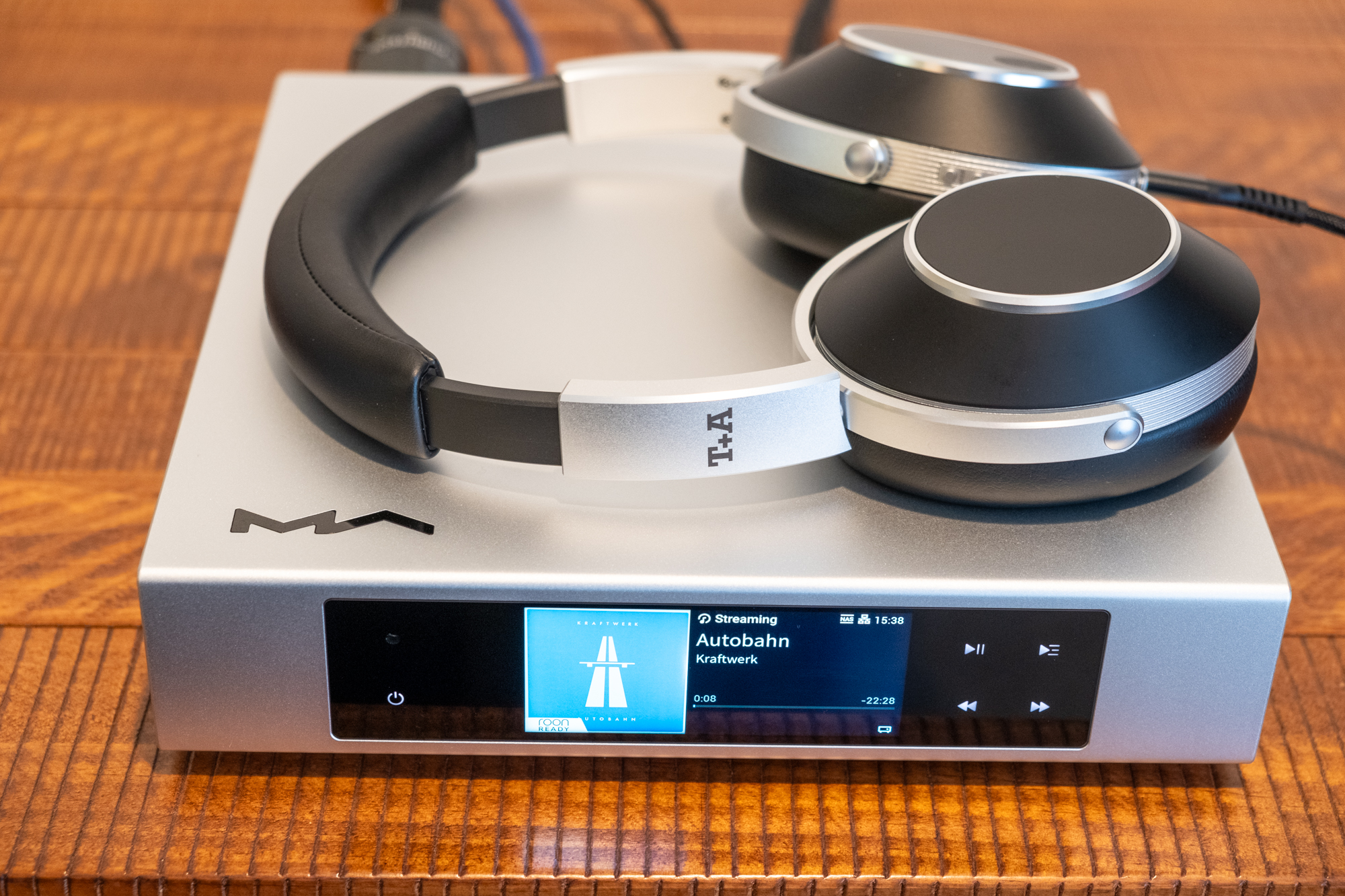
During this testing, I obviously had to use the Surface Laptop with USB - it doesn't give us anything else to work with. When using the Element S I could choose between USB, AES/EBU, Toslink, coaxial, or I2S, depending on the particular DAC in question and its feature set. This was eye opening and served as a great reminder that as much as we like to think USB is well-sorted, in some cases it will still lag significantly behind the other inputs in terms of performance. Yet with some DACs it is equal or even the best option to use, so it's worth having multiple options to choose from.
Comparisons
Having established the Element S as being significantly more capable than a basic consumer-grade laptop, it was time to move on to some higher quality dedicated audio devices. My next comparison involved the popular Eversolo DMP-A6. At $899 it represents an excellent value, particularly if one intends to take advantage of its all-in-one capabilities.
Comparing the A6 directly to the Element S is actually tough though, since each machine has a very different focus. The Eversolo gets major points for having the surprisingly capable balanced DAC as well as the larger touchscreen display and more versatile Android-based OS. But for pure transport use the Element S takes a commanding lead in sonics. I especially liked having the options to use I2S or AES, which are often the preferred connection types (obviously depending on the DAC). But even when using the same output - coaxial for example - I felt like most systems went a bit further with the Matrix than the Eversolo. Again, it's tough to make blanket conclusions since each DAC is different, but in many cases the Element S proved to have the upper hand.
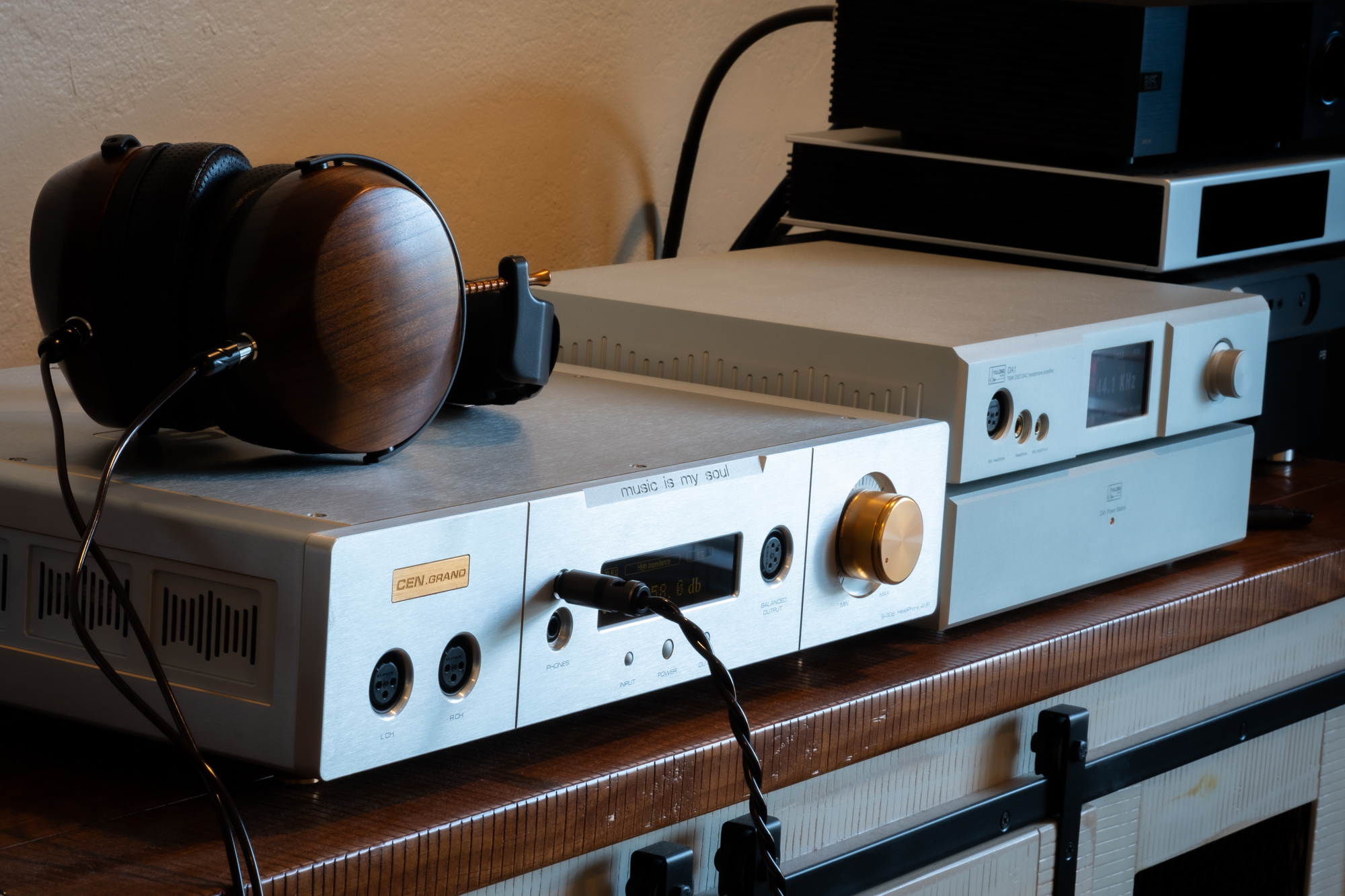
I also compared the Element S to my Stack Audio Link II with the matching Stack Audio Volt PSU. The cost of this combo is fairly similar to the Element S, so I was interested in seeing which one came out ahead.
Turns out this comparison is sort of the inverse of the Eversolo vs Matrix showdown. This time around it is the Element S which has the much larger feature set, whilst the competition is a highly focused device that offers better SQ in a certain context - that context being USB which is the only output available on the Stack Audio device. It sounded more fluid and dynamic overall, with just a bit of that "last word" realism which can be so elusive. If we can live without things like a dedicated playback app (the Link II mainly relies on Roon), or front panel display, and if we use a DAC which can sound its best via USB, then the Stack Audio Link II would be the better transport choice. If, however, you might need I2S or SPDIF outputs, or any of those various other creature comforts, the Element S gets the win. That's a big deal because despite not being all that well known, the Stack Audio Link II is among my very favorite transport devices, regardless of price. For the Element S to play in that same realm is extremely impressive.
Lastly, I cobbled together a system consisting of the Surface Pro feeding the previous generation Matrix X-SPDIF 2, which I powered by a Keces P8 linear power supply. Note that the cost of this DDC/PSU combo is roughly equal to that of the Element S. It also unlocks the same connectivity as far as AES, I2S, coaxial, and Toslink, to take full advantage of whichever type a particular DAC likes best. Long story short - despite the parity in these areas, and the heroic quality of the tanklike Keces PSU, the newer Matrix device still took the win by a reasonable margin. It sounded more focused, with superior bass definition and more accurate imaging as well as a sweeter midrange. I would have liked to reproduce this same experiment using the X-SPDIF 3 since that's essentially what we find inside the Element S. But reviewers can't have every piece of gear ever made, so we work with what we have on hand.
Getting into more general terms - I have owned or extensively auditioned most of the big models from Innuos, Aurender, Lumin, SOtM, Auralic, etc and have a great respect for most of them. Yet based on my needs, and with a focus on SQ over features, I would happily choose the Element S over the majority of them, even models costing significantly more. I'm not saying the Element S beats an $18k Innuos Statement, but I would certainly put it up against their $3.6k Zen mk3, or the $5k Lumin U2, or even the $6k Auralic Aries G2.2, and be confident of a very tough fight - again in terms of SQ only. The Matrix Element S really is that good!
I2S Odds and Ends
As I've mentioned, I2S is often the best choice for maximum performance, but it obviously depends on the DAC being used. I never want to make a blanket statement and say "X interface is always superior" because it really comes down to the combination of transport and DAC working together. I generally find that when DAC makers bother to integrate I2S, it does tend to be the preferred option. But that isn't always the case, so definitely try everything and see which sounds best in your particular setup.
That said, I also appreciate the fact that Matrix gives us 4 different software adjustable configurations for I2S compatibility. The I2S format is still a mess in terms of standards - some brands use RJ45 while many others use HDMI, but the pinouts are often different so you really have to be careful. I've been able to use the Element S with a Wired4Sound Anniversary DAC, Cayin CS-100DAC, Denafrips Pontus II, and Musician Audio Aquarius, all with excellent results. But I can't guarantee that it will work perfectly with every device out there, even if they do use a "standard" HDMI connection. Just something to be aware of for those planning on going the I2S route.
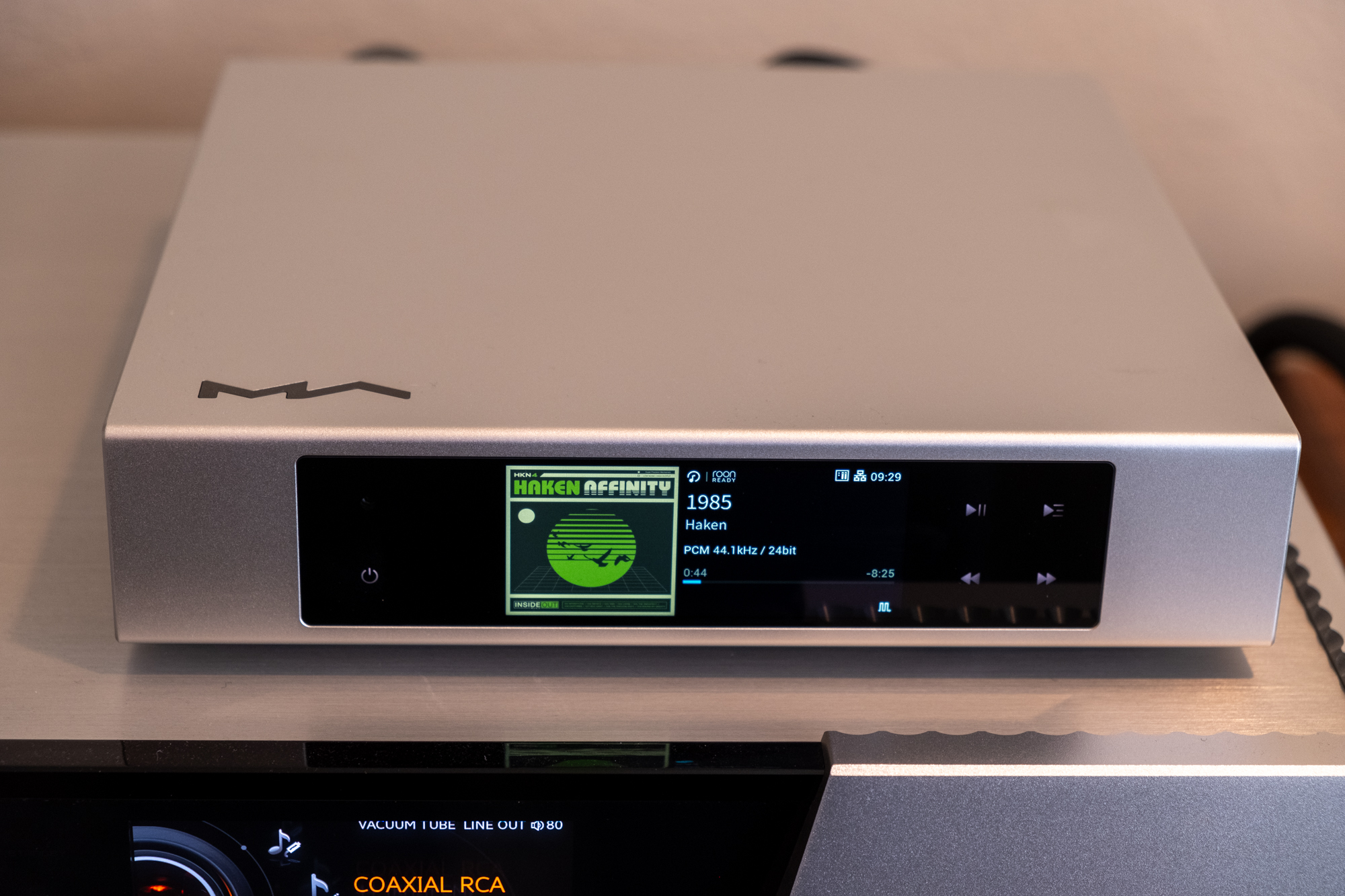
Conclusion
The Matrix Element S is one of the best sounding transports I've heard in quite some time. And I don't mean "in this price range" either. Remember, many of the more expensive competitors cost more due to having integrated DACs, large internal hard drives, headphone outputs, preamp functionality, or just massive (expensive) enclosures. The Element S is a pure transport and focuses all of its resources towards that singular goal. If you are looking for an extremely high quality way to feed your DAC - particularly via I2S, AES, or coaxial SPDIF - the Element S is absolutely worth checking out. It had a bit of a rocky start but now that everything is sorted, I can happily recommend it.
Bonus Section: MA Remote
I also want to throw in some pics of the MA Remote app being used, just to give you a general idea of what the experience looks like. I find it perfectly usable though not anywhere near as engaging as Roon (but I'm a huge Roon fan so keep that in mind). As you can see, it looks nice and has most everything the average user could want, even if it isn't the best for interacting with massive collections of music.
All in all I'd call it roughly on par with the competition - with the caveat that everyone's needs and preferences are different. I can't predict if you'll like this more or less than Aurender's Conductor, Auralic's Lightning DS, etc but I can say it generally plays on that same level.
(Note that these are just screenshots from my Pixel 8, using a tablet would probably offer a better experience)








Obligatory Roon shots as well:


TheMaestro335
Hello, great review! I have been waiting patiently for this! I couldn’t agree with you more. This truly is a top notch Streamer!
Confidence
Hello, thank you for a great review of the Element S.

